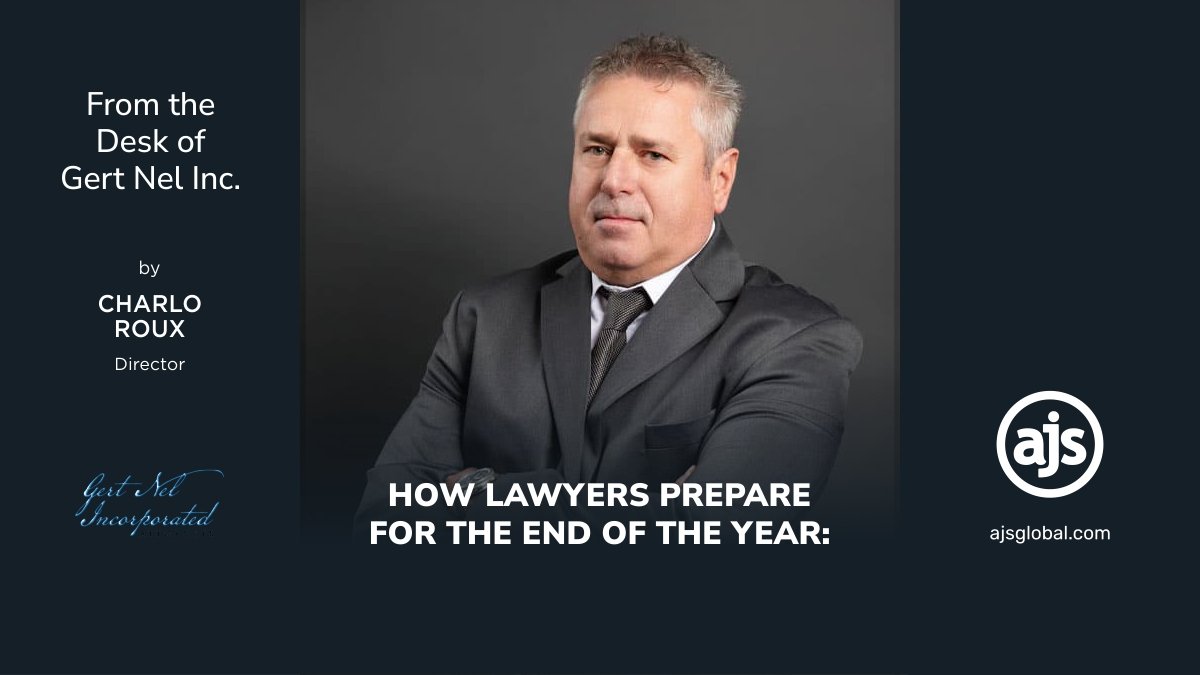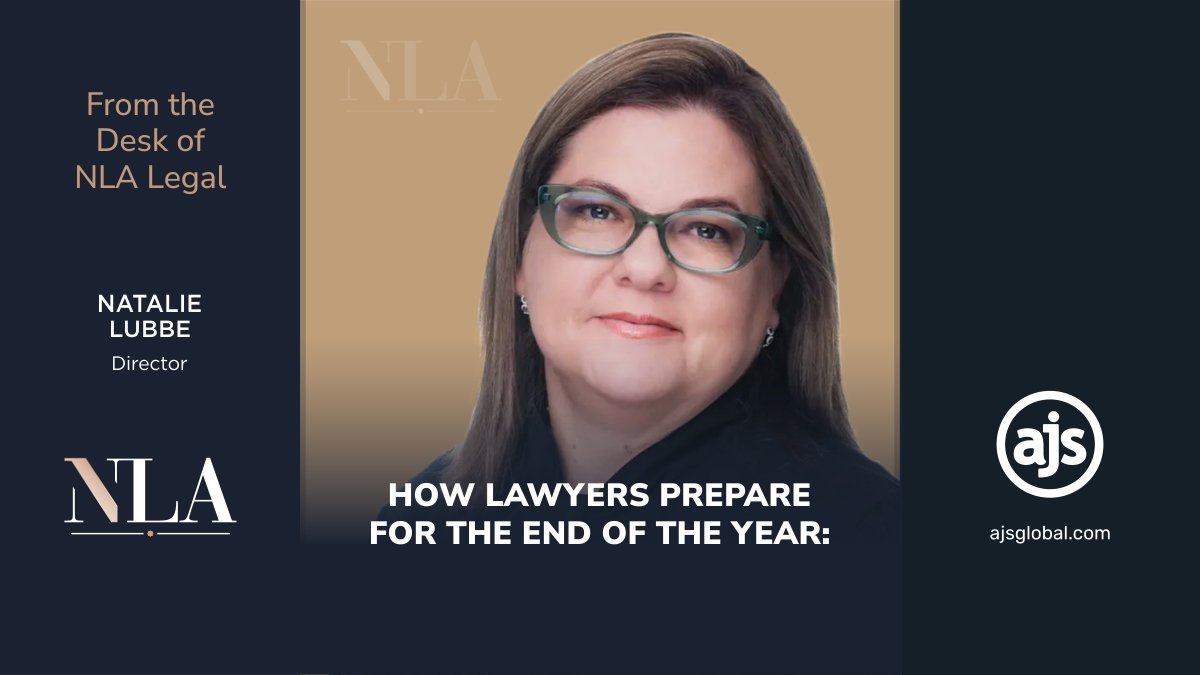
REFLECTIONS: On Legal Tech Trends
Technology is a forever evolving, changing, and improving “thing”. Some would even venture to say that advancement in technology is inevitable.
And due to this continuous upward trend in improvement and innovation, we tend to think that technology’s sole purpose is to fulfill our every whim – both at work and at home. Streamlining things, making our work life more efficient, effective, more secure and at a reduced cost. At home, we expect technology to make things convenient, easy, enjoyable. All while fitting into our everyday lives without making it more complicated.
The problem with this? As technology inevitably evolves, changes, and improves (our own included), it’s kind of hard to know what to take seriously and what to leave by the wayside. There seems to be a constant pressure to keep up with everything. As if the “Joneses” are literally our nosy next-door neighbours. But that cannot be realistic. Or sustainable. Or cost effective.
We dedicated a whole series to this earlier this year (please refer to our Tech Series, which can be found here) but it does bear repeating.
What legal tech trends did we predict for 2022?
Our previous Tech Trend predictions were based on market research and findings from organizations that undertake trend spotting as their sole output. So, for the most part, what we set out in our previous article has proven to be accurate insofar as what is currently available and what you should be looking to incorporate into your practice.
The tech trends we highlighted included document automation, workflow automation, regulatory technology, cloud computing, cybersecurity, data management, and block chain technology.
A brief overview of the more notable ones are as follows –
- Document Automation – the automation of work often involves using technology to automate repetitive, manual processes to streamline and systemise workflow, keeping track of each part of a process resulting in an increase to overall productivity. The very purpose of automation is to free people up to concentrate on more knowledge-based, specialist tasks, where they can use their skills in a strategic way to outperform competitors. And this can be seen most notably with contract and document automation. Contract and document automation has significantly decreased the time it generally takes to execute contracts and produce various documents. Popular use cases include the preparation of NDA’s, employment contracts, lease agreements, procurement contracts, engagement letters and so much more. With the additional use of cloud-based document automation, data is seamlessly integrated into templates which populate signature-ready documents instantly. Through programming language and automation technology, precise and accurate documents are drafted in a single click.
- Workflow Automation – automating legal workflows is the processes in which legal tech is used to facilitate, structure, and streamline the performance of repetitive and labour-intensive legal tasks. Instead of retyping a long document or spending hours reformatting, you can simply upload your document and the workflow tech does the rest. Workflow automation leads us to the concept of “hyper-automation”. Essentially, hyper-automation is a combination of multiple complimentary tools, technologies, and platforms that can be integrated into functions and processes within an organisation to automate repetitive processes and increase machine learning. It’s an integration of both process or workflow automation and contract/document automation amplifying the ability to automate business processes in their entirety. Simply put – everything that can be automated will be automated with hyper-automation.
- Cloud-computing – keeping a vast amount of data organised in an efficient and accessible manner is an absolute necessity. Lawyers specifically deal with a lot of information, operating many documents and analysing a big scope of data. Thus, the importance of cloud-based storage cannot be over-emphasised. Hosted cloud servers are really nothing new, but the legal market has been slow to migrate their data to the cloud because of security concerns. But now with improved security measures, cloud-based storage has become increasingly more attractive to legal professionals allowing them to fully operate remotely (and in the cloud) whilst also providing teams with more opportunities for online collaboration.
- Blockchain Technology – blockchain technology provides a hacker-proof network to exchange information. For some legal departments that are struggling under the burden of excessive paperwork and records, the integration of blockchain technology to store information in a transparent and precise fixed ledger rather than a centralised database is a game changer. Aside from network security, smart contracts over blockchain can help speed up legal processes by automating and executing legal contracts without human intervention or manipulation, reducing the involvement of an intermediary and completely reducing any time delay – the execution of contracts is automated.
Some further (and worthwhile) reading on interesting tech trends can be found on plainconcepts.
How does AJS fit in with these tech trends?
With so many tech options to choose from, we believe that instead of going “all out” and implementing everything into your practice as quickly as possible, you should spend time analysing your business and your processes instead. Critically. Identify and prioritise your most pressing challenges and only then decide what technology will be right for you and your practice.
To help with this decision, AJS has a number of products already available within its existing product offering that can tick the box of some of the trends listed above. For example –
- For document automation – XpressDox is perfectly poised to take your legal practice to the next level. It is a powerful document assembly system managing your document automation needs with ease. It can be used as a stand-alone product, on a network, via the web (own-hosted or XpressDox-hosted), or even from within your own application or website.
- For workflow automation (or hyper automation) – FLOW is designed for this very purpose. It automates repetitive processes and increases throughput by improving control and ensuring accuracy. It is also a standalone, configurable workflow system that is perfect for any process that has a defined set of steps or stages. Better still, it can be easily accessed via the Cloud. PRO and ENTERPRISE both contain the ability for configurable embedded workflow solutions as part of the AJS financial and practice management solutions.
- For cloud computing – AJS products are all cloud-based which means that authorised users can access their system securely from anywhere, on almost any device.
Have the tech trends been all they are cracked up to be?
That’s kind of a yes and no answer.
While automation, artificial intelligence and machine learning remain the top trend in technology and specifically legal tech (Trendhunter), there is one trend that has been surprising. And it’s seemingly the absence of incorporation of new legal tech that has taken centre stage.
As Artificial Lawyer set out –
“If Legal Geek is one of the key barometers of our sector, then there is a lot to be optimistic about. But we didn’t see much there that was technologically new or challenging. Instead, the dominant theme was implementing what is already known and understood.
Innovation is in the eye of the beholder. A junior associate who has not spent much time looking at legal tech tools may find the array of software at most trade shows to be mind-boggling.
Personally, I saw a lot of great companies providing roughly similar offerings to what they were offering before and really focusing on, as noted, helping people to get value from it, and simply getting it into people’s hands so that they could even attempt to get value from it…!
It all boils down to: where are we trying to get to? What problems are we trying to solve? And we don’t have time to dig into that one here, but suffice it to say, if the goal is to reduce inefficiency in the legal sector, then there is plenty out there now to help, across nearly every aspect of commercial law.
Combine that with new ways of working, rethinking the use of legal data, and applying different business models, and the legal sector is clearly moving in the right direction. That is something to celebrate.”
The over-arching trend has seemingly moved away from developing, focusing instead on the implementation of tech into legal practices. Ensuring that the legal tech that has already been adopted is adding real value. And that does make a lot of sense. To us at least.
Because having a solid foundation on which you can build and expand on your software systems is key. It’s a “building from the ground up” approach. Ensuring your starting point is solid before building upwards. Start by ensuring that you have the correct foundational systems first before you attempt to incorporate every “tech trend” that comes your way. Take this all step-by-step.
Focus your efforts on getting the right technology into your practice so that you are running efficiently, optimally and at a reduced cost without unnecessary bells and whistles that cost an arm and a leg but don’t offer real measurable value. Yet.
Reflecting on what you already have so that you can properly plan for your future. The power of reflection, once again coming to the fore.
We can help streamline your legal tech needs ensuring that you get exactly what you need. Get in touch with us and let us help you plan for proper legal tech implementation that suits you.
What are some of the new tech trends for 2023?
Ok, we know that we said you should focus on implementation instead of what the next big thing is… but there’s no harm (really) with having a little “look-see” on what is possibly on the cards for 2023, is there?
Simplilearn has highlighted 18 tech trends that will be on everyone’s radar come 2023. Of these 18, we have briefly highlighted 3 that we believe are noteworthy (so far) –
- Extended reality – comprising all the technologies that simulate reality, from Virtual Reality, Augmented Reality to Mixed Reality, it has become a huge tech trend as many of us crave a break away from the so-called “real boundaries of the world”. By creating a reality without any tangible presence, this technology is massively popular amongst gamers, medical specialists, and retail and modeling. The metaverse fits comfortably within this extended reality (we wrote about it here) even allowing for the purchase of land and real estate (read Forbes article on this here).
- Edge computing – companies that have already embraced the cloud have noticed how it has completely transformed their business and operational and governance models. Organisations can work from anywhere, further enhancing complete online collaboration across jurisdictions. But there have been some shortcomings, especially as we continue to deal with more and more data. Step in edge computing which is designed to counteract the latency and centralization of the cloud and bring capabilities and resources closer to users in real-time, existing “on the very edge” of the cloud, taking it that one step further.
- Quantum computing – by using principles of quantum theory, quantum computing takes advantage of quantum phenomena like superposition and quantum entanglement allowing for the secure transfer of hypercomplex data a multitude times faster than regular computers thanks to its ability to easily query, monitor, analyze and act on data, regardless of the source. We wrote a little about quantum computing in our article in June this year on Technology (read here).
It’s no surprise that “Looking back so that the view looking forward is even clearer” – Unknown has become crucial nowadays. Don’t rush in. Analayse, consider, look at what you have and then make a move.
To incorporate best-in-class legal technology that has its clients at the forefront of everything we do, get in touch with AJS to find out how we can support you and assist you with incorporating our innovative (but easy to use) legal technology into your practice today.
– Written by Alicia Koch on behalf of AJS





Leave a Reply